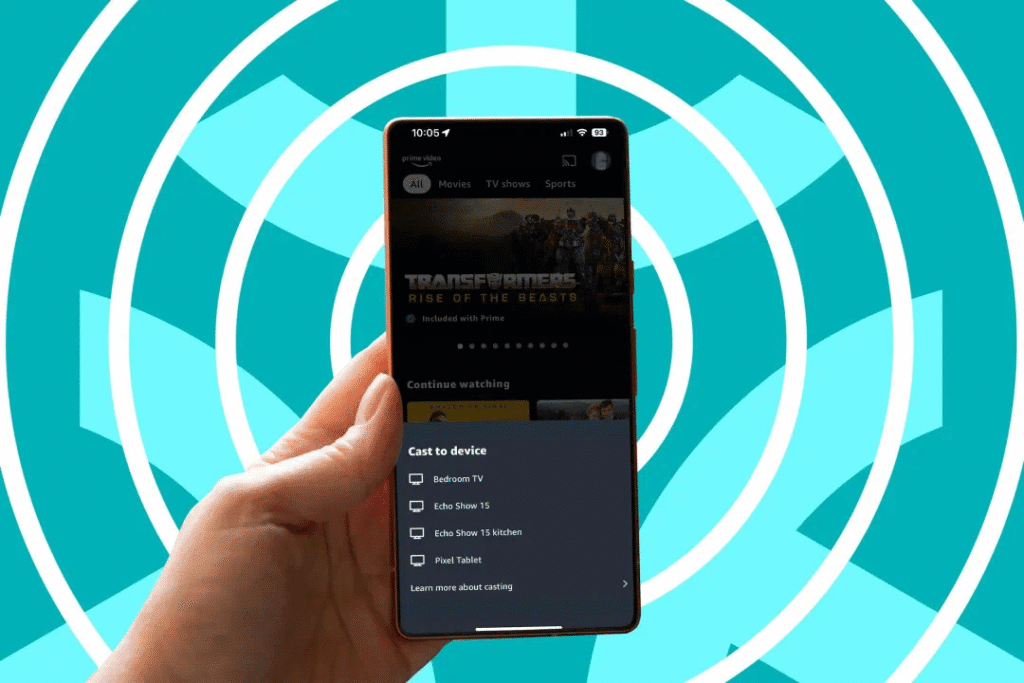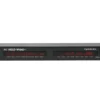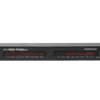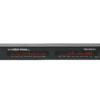Will Matter Cast Secure a Spot in WiFi Audio
Introduction to Matter
In December 2019, to address the fragmentation in the smart home market, tech giants including Apple, Google,and Amazon joined forces with the Zigbee Alliance to launch the Project CHIP (Connected Home over IP) initiative. CHIP aims to develop an open standard based on IP (Internet Protocol) that enables smart home devices to interoperate across brands and platforms.
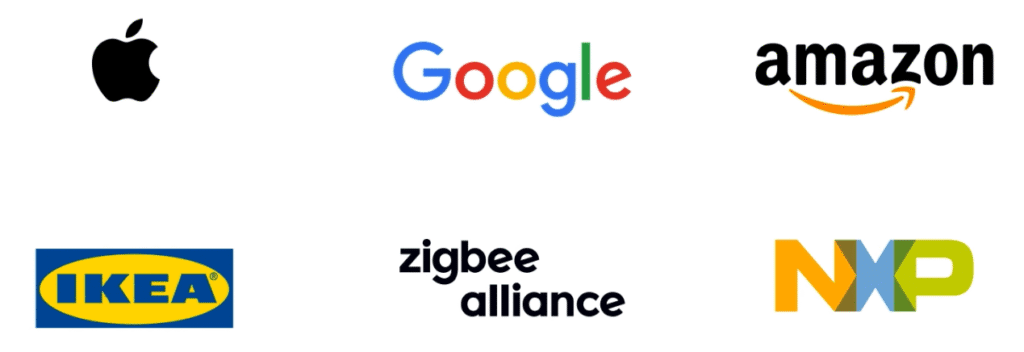
Matter is an open-source application-layer protocol that abstracts away the ecosystems and systems of device manufacturers. It aims to create a unified communication standard across smart home devices, mobile applications, and cloud services. Matter supports a variety of existing technologies, including Ethernet, Wi-Fi, Thread, and Bluetooth Low Energy (BLE), and uses IPv6-based transport protocols like TCP and UDP to ensure connectivity between different types of networks.
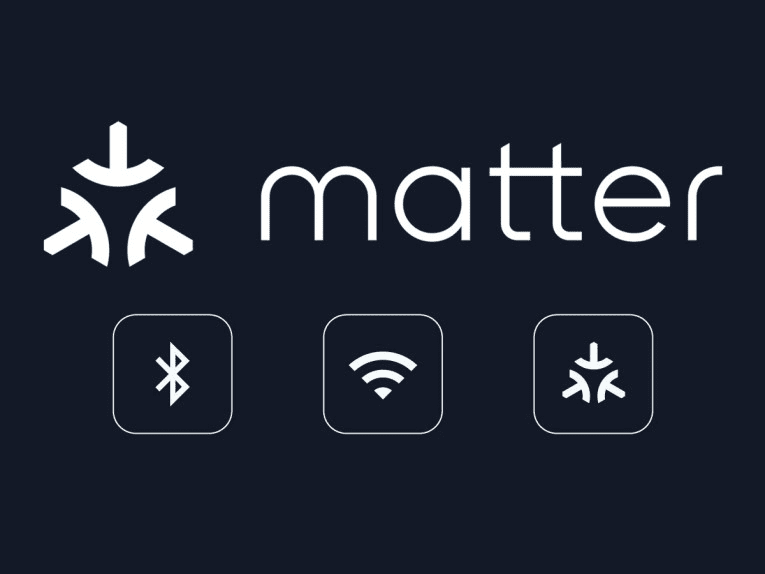
Matter is implemented through an open-source SDK (available at https://github.com/project-chip), which not only includes the implementation of the specification but also a rich set of examples and interoperability code. The core Matter protocol is applicable to the first three layers of the OSI environment, meaning it supports any type of IPv6 transport and network operation. While control and other operational communications are conducted over IPv6, Bluetooth Low Energy (BLE) may be used for commissioning new devices.
Matter is both flexible and interoperable. It is based on years of challenges and successes with low-power 802.15.4 networks and Wi-Fi smart home devices. Similar to Thread, Matter is built on IPv6. It offers robust encryption, well-defined device types and their data modeling, and support for multiple ecosystem administrators.
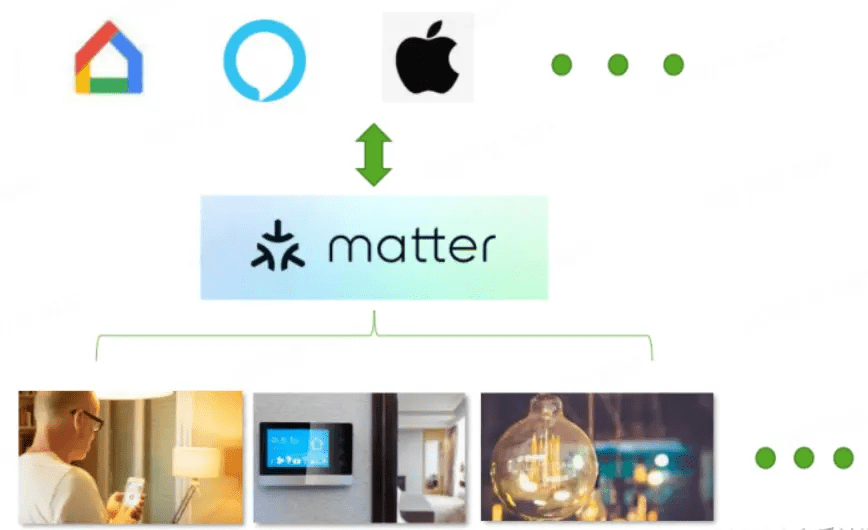
Matter Protocol Architecture
The primary objective of Matter is to offer a “universal communication protocol for smart home devices based on IPv6.“ Applications built on the Matter stack utilize Matter’s cluster APIs (akin to HTTPS requests initiated via a web browser) to communicate and/or effectuate changes on Matter devices. For a deeper dive, let’s examine the Matter software stack through the lens of the Open Systems Interconnection (OSI) model.
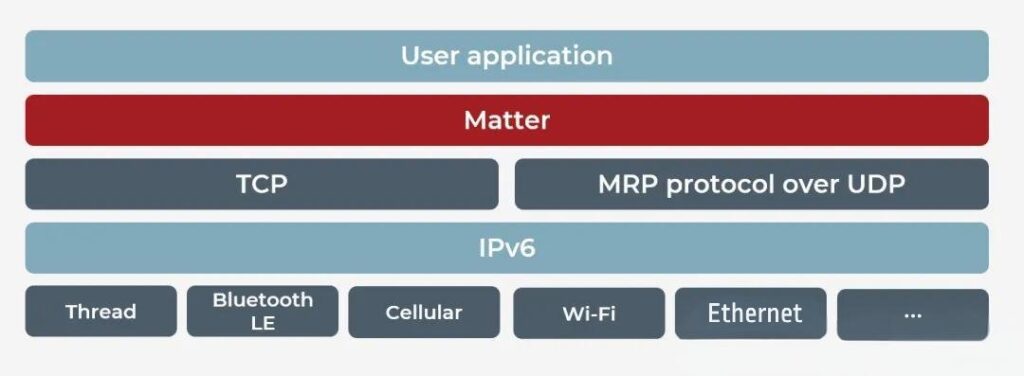
The core of the Matter stack resides in layers 5 through 7 of the OSI model (Session, Presentation, and Application layers). For the other OSI layers, the Matter stack emphasizes the use of existing protocols. At the Transport and Network layers, Matter relies on TCP or Message Reliability Protocol/UDP—all running over the IPv6 network protocol. (Exception: For device commissioning, Matter employs the Bluetooth Transport Protocol (BTP) and Bluetooth Low Energy (GATT) network protocol. Device commissioning will be discussed later.) Finally, Matter leverages a diverse set of media layer (Data Link and Physical layers) protocols—Wi-Fi, Ethernet, Thread—to transmit and receive data.

Matter Network Topology
Matter network topology refers to the connection structure between Matter devices and IPv6 networks. Different IPv6 networks can communicate with each other through a central hub (such as a Thread Border Router or Wi-Fi access point).
Matter also allows connections to external networks based on other protocols (such as Zigbee, Bluetooth Mesh, and Z-Wave) via Matter bridges.
The figure below illustrates a generic Matter topology example, which includes two Thread Border Router devices, one of which has an optional connection to the Internet, and a Wi-Fi device at the top of the diagram that acts as a Matter bridge for devices based on other protocols.
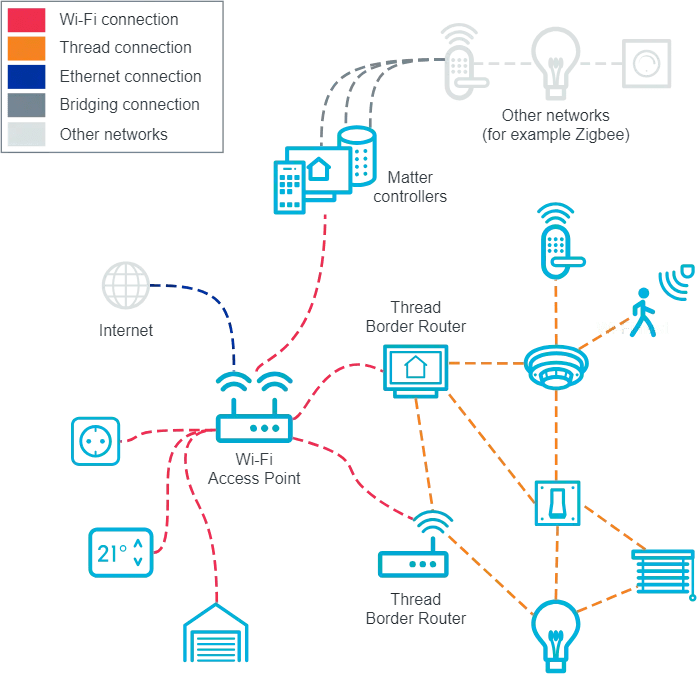
Matter Cast (Audio Included)
Matter Casting is a new feature within the Matter smart home standard that allows users to cast content from their phones, tablets, or laptops to a Matter-enabled device, like a smart TV, using their local network. It’s similar to Google Cast (Chromecast) or Apple AirPlay but is designed to be cross-brand and more universally compatible. Essentially, it enables seamless and secure content streaming between devices within the same local network, without relying on the internet.
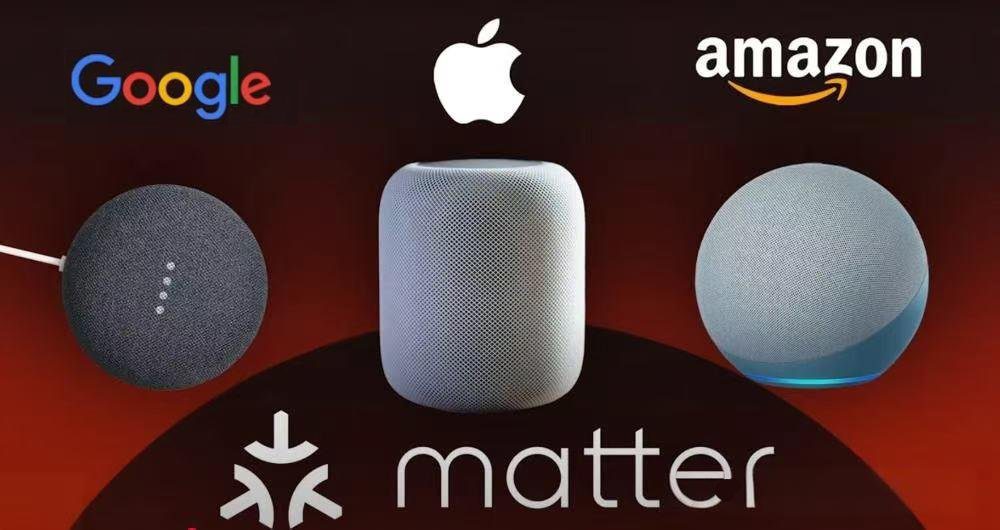
| Feature | Matter Casting |
|---|---|
| Cross-Brand Compatibility | |
| Easy Setup | |
| Local and Secure Casting | |
| Current Device Support | Amazon Fire TV (Fire OS 7+), Echo Show 15 |
| Current App Support | Prime Video (iOS & Android) |
| Upcoming App Support | Plex, Pluto TV, Sling TV, STARZ, ZDF |
All multi-room streaming amplifier from OpenAudio will support Matter Cast by just update.
